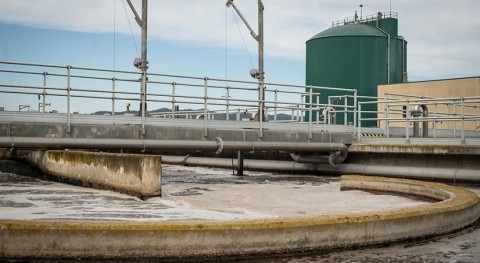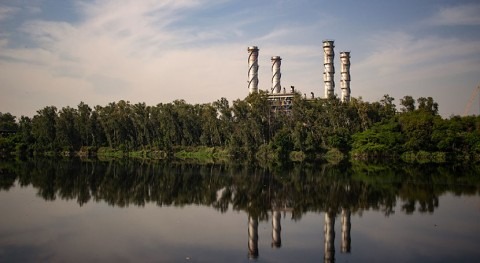A new environmental thriller, ‘Dark Waters’, promises to draw attention to a group of toxic man-made fluorinated substances, the PFAS, that have found their way to our environment.
The film tells the real story of a whistleblowing lawyer who sued DuPont for polluting the drinking water of a farming community in West Virginia, while hiding information about the adverse effects that a chemical used in their plant had on health. You can read about the details of the story in a 2016 article published in the New York Times Magazine, ‘The Lawyer Who Became DuPont's Worst Nightmare’.
You have probably heard of PFAS (per and polyfluoroalkyl substances), a group of synthetic chemicals that have been manufactured since the 1940s, but that have made the news in recent years due to their association to cancer, liver and thyroid disease, and other adverse health effects. As Bloomberg reports, they have been found in the blood of many US citizens tested, and they pollute the water of many communities across the US.
The film tells the real story of a whistleblowing lawyer who sued DuPont for polluting the drinking water of a farming community in West Virgini
PFAS include a large number of chemicals used in food packaging to make things grease and stain-resistant (such as pizza boxes). They are also used in firefighting foams and a range of manufacturing practices. They are persistent, meaning they build up in the environment and the human body.
Drinking water is a source of exposure in communities where the chemicals have contaminated the water supplies, typically around a specific facility where they were produced or used to manufacture other products. That is the case of DuPont’s facility in Parkersburg, West Virginia ─ the setting of ‘Dark Waters’ ─, where PFOA, a type of PFAS, was used to make Teflon.
Apparently, the chemical industry knew about the health risks from PFAS early on. But 3M, DuPont and other PFAS manufacturers kept that information secret until the landmark lawsuit portrayed in the movie. DuPont followed the tactic of the tobacco industry, casting doubts about the scientific evidence, and commissioned scientific consulting firm ChemRisk to conduct an assessment of exposure around the plant, who found it to be thousands of times below the levels that would cause health effects, exactly the outcome they sought.
But the attorney ─ Rob Bilott in real life, played by Mark Ruffalo ─ won and the EPA fined DuPoint, who also had to clean up the local water. In addition, the corporation agreed to fund further studies on the effects of PFOA, also known as C8, on workers and residents, and has paid more than $600 million in compensation to people affected since then.
Professor Susan Pinney from the University of Cincinnati has studied extensively human exposure to PFOA in drinking water and welcomes the movie to spread the message about this issue. ‘Often there’s no action taken on these types of environmental issues until there’s litigation or some dire consequences’, she said.
This is not the first and probably will not be the last film about a whistle-blower against a large corporation (we all remember Erin Brockovich’s fight against Pacific Gas and Electric Company for contaminating the water with hexavalent chrome). But this film shows once again that corporations should not be allowed to conceal scientific information about the effects of their products, and scientific evidence by researchers with conflicts of interest should not be believed. As Bloomberg reporter David Michaels points out, ‘the system through which scientific evidence is produced also needs to be cleaned up’, in order to protect the public. Although the companies responsible for potentially harmful products should have to pay for the research, it should be carried out by independent scientists.
And where do we stand now? The best known PFAS, PFOA (perfluorooctanoic acid) and PFOS (perfluorooctane sulfonic acid), have now been phased out in the US, and replaced by a new generation of PFAS that the chemical industry claims are safer, although these claims are being challenged by recent studies. The PFAS universe is mind boggling. This news feature in Nature gives an idea of the complexities around assessing the hazards of a group of thousands of chemicals, a difficult task that started with the science panel that emerged from the DuPont lawsuit back in 2001. A priority should be to prevent PFAS pollution, through responsible manufacturing and disposal processes. Phasing out their use is controversial: they are useful chemicals, and in some cases, there are no viable alternatives.
One thing is for sure: PFAS will continue to be in the spotlight. Last September the EPA awarded $6M to research their impacts, and it recently released a PFAS Action Plan, outlining concrete steps the agency is taking to address PFAS and to protect public health. Meanwhile, in the EU the European Food Safety Authority is reassessing the risks these chemicals pose to human health.



















